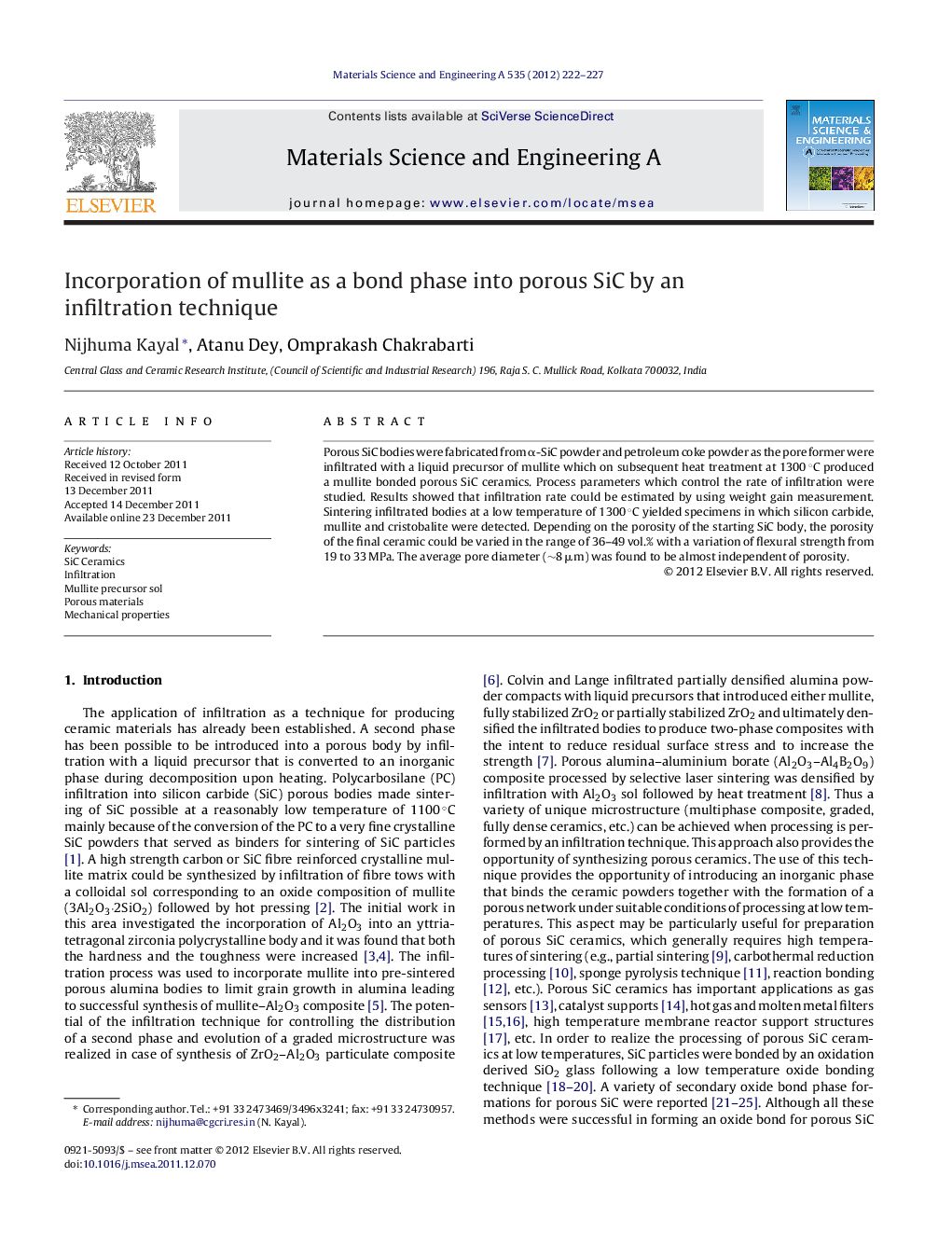| Article ID | Journal | Published Year | Pages | File Type |
|---|---|---|---|---|
| 1577678 | Materials Science and Engineering: A | 2012 | 6 Pages |
Porous SiC bodies were fabricated from α-SiC powder and petroleum coke powder as the pore former were infiltrated with a liquid precursor of mullite which on subsequent heat treatment at 1300 °C produced a mullite bonded porous SiC ceramics. Process parameters which control the rate of infiltration were studied. Results showed that infiltration rate could be estimated by using weight gain measurement. Sintering infiltrated bodies at a low temperature of 1300 °C yielded specimens in which silicon carbide, mullite and cristobalite were detected. Depending on the porosity of the starting SiC body, the porosity of the final ceramic could be varied in the range of 36–49 vol.% with a variation of flexural strength from 19 to 33 MPa. The average pore diameter (∼8 μm) was found to be almost independent of porosity.
► In this study synthesis of mullite bonded porous SiC ceramics was demonstrated. ► The mullite bond phase was incorporated by infiltration of mullite precursor sol. ► Infiltration occurred in two steps governed by the capillary force and diffusion of entrapped air. ► The flexural strength of the porous SiC ceramics was found to decrease with increase in porosity. ► The flexural strength-porosity relationship could be explained by the minimum solid area model.
